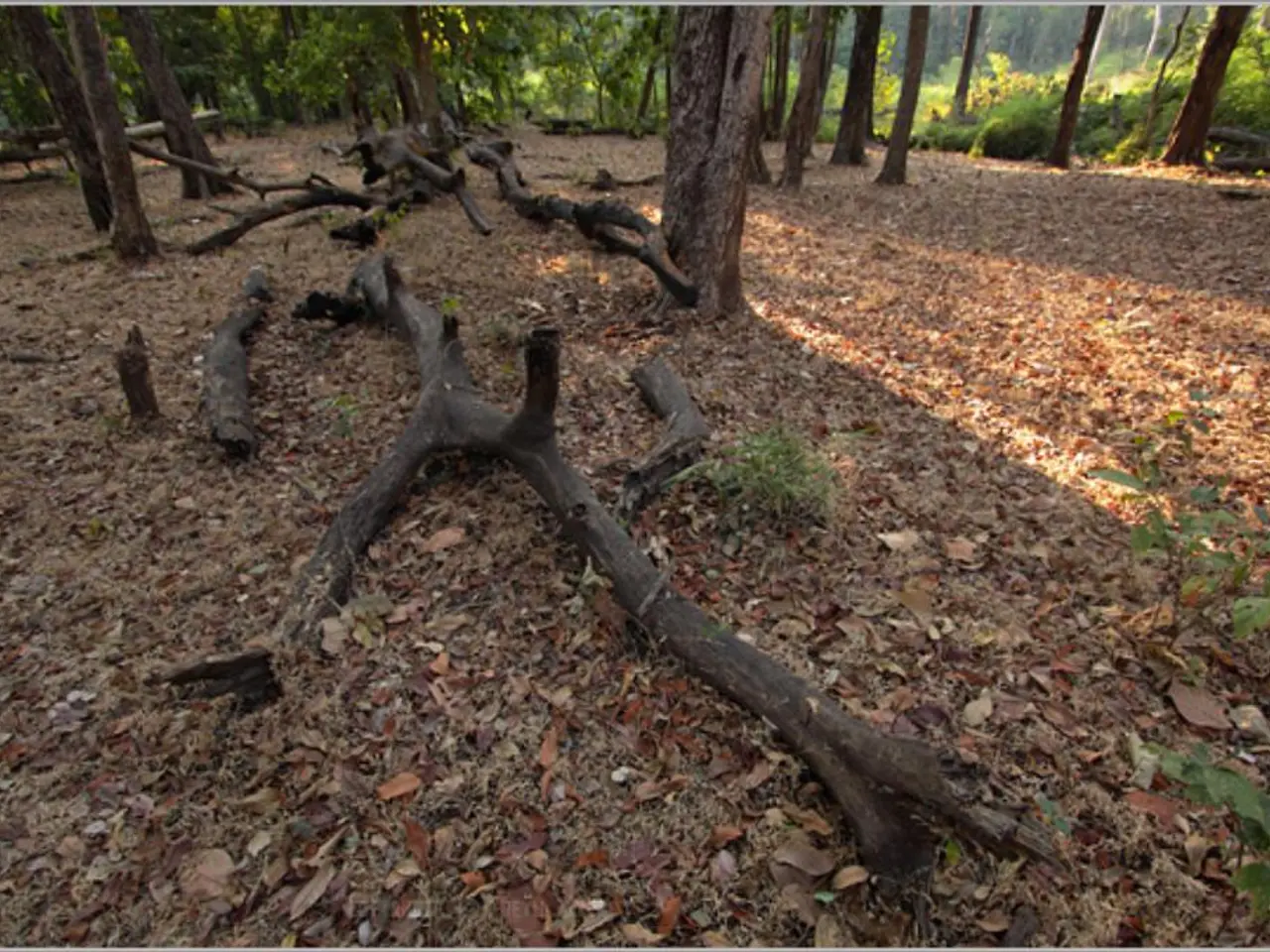"July Delivered Positive Growth for Vegetation"
Berlin, Germany, has been experiencing unusually high rainfall in July, with the city receiving 145 liters of rain per square meter - more than twice the usual amount for the second summer month. This excess water has been a "blessing" for many plants in Berlin's parks, according to urban nature expert Derk Ehlert. However, the current rainfall is not enough to relieve the low groundwater level or make up for the deficit of previous months and years.
The spring of 2025 was one of the driest on record, putting stress on trees during their critical growth phases. The excess rainfall, while beneficial for many plants, may have come too late for some trees, which have already suffered from the dryness. Ehlert compares the excess rain to a scarf that cannot make up for the deficit of previous months and years.
The deep absorption of water by trees is important for them to get enough nutrients, as stated by Derk Ehlert. However, excessive rainfall can lead to waterlogging of soils, reducing oxygen availability to tree roots and causing root suffocation. This condition weakens trees by increasing their vulnerability to diseases and pests. Waterlogged soils can also leach nutrients essential for tree growth, further stressing the vegetation. These effects can slow tree growth and reduce their overall health over time.
The long-term effects of excessive rainfall on Berlin's trees and overall ecosystem can include potential stress and recovery complications. The alternation from drought to water excess creates challenging conditions for urban and forest ecosystems as they have to adapt quickly to fluctuating water availability.
Regarding the overall ecosystem, excessive rainfall may alter soil chemistry and microbial activity, potentially disrupting soil nutrient cycles. Prolonged wet conditions can also affect the habitat suitability for various fauna, including insects and birds, some of which rely on stable soil and vegetation conditions. Moreover, saturated soils increase runoff and can cause localized flooding, which further impacts urban infrastructure and natural habitats.
According to the 2021 Berlin Forest Condition Report, only four percent of trees show no visible damage. The report did not mention the unusually dry spring of 2025, but it does highlight the impact of the excessive rainfall on the city's trees. The excess water has led to the formation of strong new leaves on trees in Berlin's parks, but it does not address the damage done to the trees in previous months and years.
In summary, the combination of a dry spring followed by excessive rainfall can cause root stress, nutrient leaching, increased disease risk, and altered ecosystem dynamics in Berlin's trees and environment, potentially leading to long-term health declines and ecosystem disruption if these conditions persist or recur. The current rainfall is a short-term remedy for the trees, which are partly damaged, and it underscores the need for long-term strategies to manage water resources in urban ecosystems.
References: [1] German Weather Service analysis shows that only Hamburg received more rain in July than Berlin. [2] Ehlert, Derk. "Excessive rainfall in Berlin: A double-edged sword for trees and ecosystems." Urban Nature Expert Blog, 2025.
Adapting to the unpredictable weather patterns, home-and-garden enthusiasts might need to consider ways to mitigate the effects of waterlogging in their gardens, as excessive rainfall can lead to root suffocation in trees, reducing their overall health over time.
The ongoing changes in Berlin's weather, with unusually dry springs followed by excessively wet summers, could potentially impact the city's lifestyle, including gardening practices, as it stresses trees and alters ecosystem dynamics.




